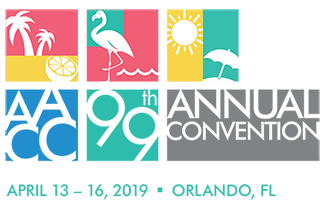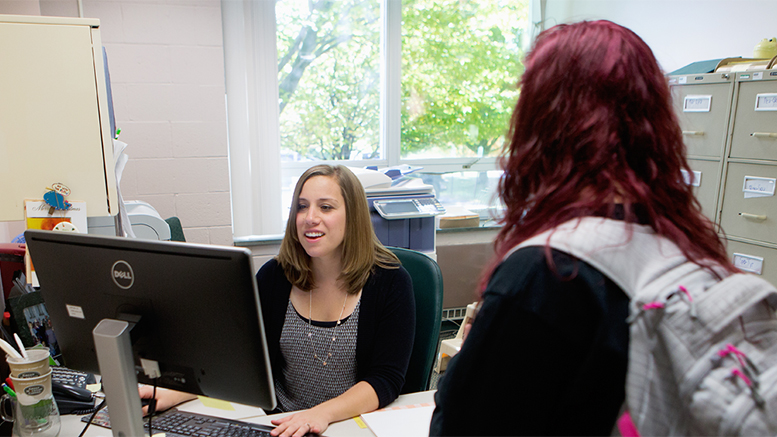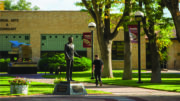Community colleges in New York are finding success with a program spearheaded by the State University of New York (SUNY) to re-engage students who “stopped out,” meaning they left college without attaining a credential.
When SUNY examined research on student loan borrowers and the barriers that prevented them from succeeding in college, “We found a strong correlation between students who completed a degree and their ability to repay it,” said SUNY Assistant Vice Chancellor Patricia Thompson, who will be co-presenting on the topic next month at the AACC Annual Convention in Orlando, Florida.
 Students who borrow too much and then drop out are much more likely to have trouble repaying their loans than students who complete a degree or certificate, Thompson said. “This is a huge problem for community colleges.”
Students who borrow too much and then drop out are much more likely to have trouble repaying their loans than students who complete a degree or certificate, Thompson said. “This is a huge problem for community colleges.”
SUNY started looking into this problem in 2012 and then formed a pilot program with 17 institutions of higher education in the SUNY system. The colleges reached out to students who had left without completing a degree – they either officially withdrew or just stopped coming to class – and sent them targeted messages urging them to re-enroll.
After the pilot was completed, in 2015, SUNY invited all campuses in the system to participate. Forty-six institutions have signed on, including 25 of the 30 community colleges in the state system.
The gray zone
Colleges are required to notify the federal government whenever a student borrower withdraws, Thompson said. The government then advises students of their repayment options. Students who are unemployed receive a notification about short-term forbearance or other ways to defer repayment. Students are given just six months to start repaying their loans.
“That can go pretty quickly, especially for those who don’t officially withdraw,” Thompson said, noting that those who walk away actually might not receive the government notification until the six-month grace period is half over.
While the federal government tells students that they can go back to college, that is not a focus of the notification.
As a result of SUNY’s research, “we decided we’re going to speak to students differently,” Thomson said.
A different message
Under the pilot, SUNY worked with participating institutions to get them to identify and report student withdrawals as quickly as possible. The colleges then sent a message to all stop-outs stating “we want you to come back,” Thompson said.
The message to students differs depending how long they’ve been gone. A student who recently stopped out gets a message with a soft touch, while stronger language is used for someone facing an imminent repayment deadline.
Stop-outs often aren’t aware of the work they put into a degree, and that if they borrowed $2,500 with nothing to show for it, they’re not equipped for a good-paying job, Thompson said.
New at convention in April: This year’s AACC annual convention in Orlando, Florida, will feature new session formats, including the soapbox, silent disco talks and 30-minute sessions, all focusing on hot topics such as pathways, apprenticeships, access and equity, and more. Register today.
The message from SUNY highlights the investment students already made and the income they could expect if they come back – and reminds them “why they came to college in the first place,” she said. Students are advised they will get help dealing with whatever obstacles they’re facing, and that help with financial literacy is available, too.
Even if a student doesn’t return to their own college, the effort is successful if they enroll at another campus. For example, a student who didn’t do well at a four-year institution might find a community college is a better fit, or a student might be interested in transferring to a different program of study at another community college.
One in five returned
Thompson deems the pilot “very successful.” In 2018, the first year of the statewide program, 2,400 stop-outs returned to college. Twenty percent of the targeted students re-enrolled in a college, and 78 percent of the 20 percent returned to their previous campus.
Retention is more challenging for community colleges because of the population they serve, she said, and as a result, “community colleges really embraced this.”
There are also different measures of success; some students just want to take a couple of classes for career advancement, for example, Thompson said. But if a student has taken out a loan, that means they are taking at least six credits a semester and are aiming for a degree. So getting them to re-engage could mean having them take summer or online classes.
“Our message is, ‘If you’ve made a commitment to us, we want you to come back and earn a credential,” she said.
Related articles about the 2019 AACC convention: Salaries prove a college’s value




